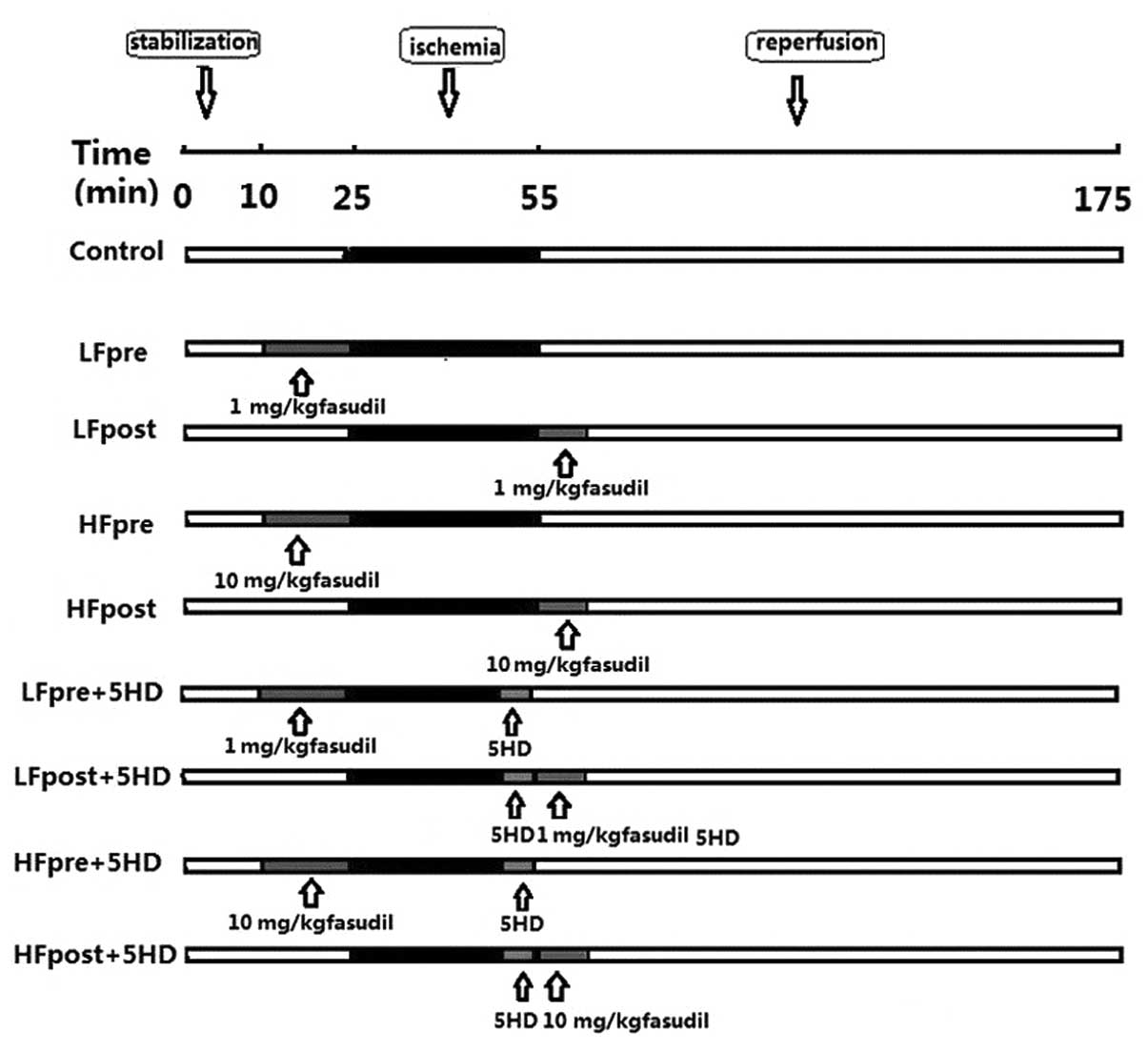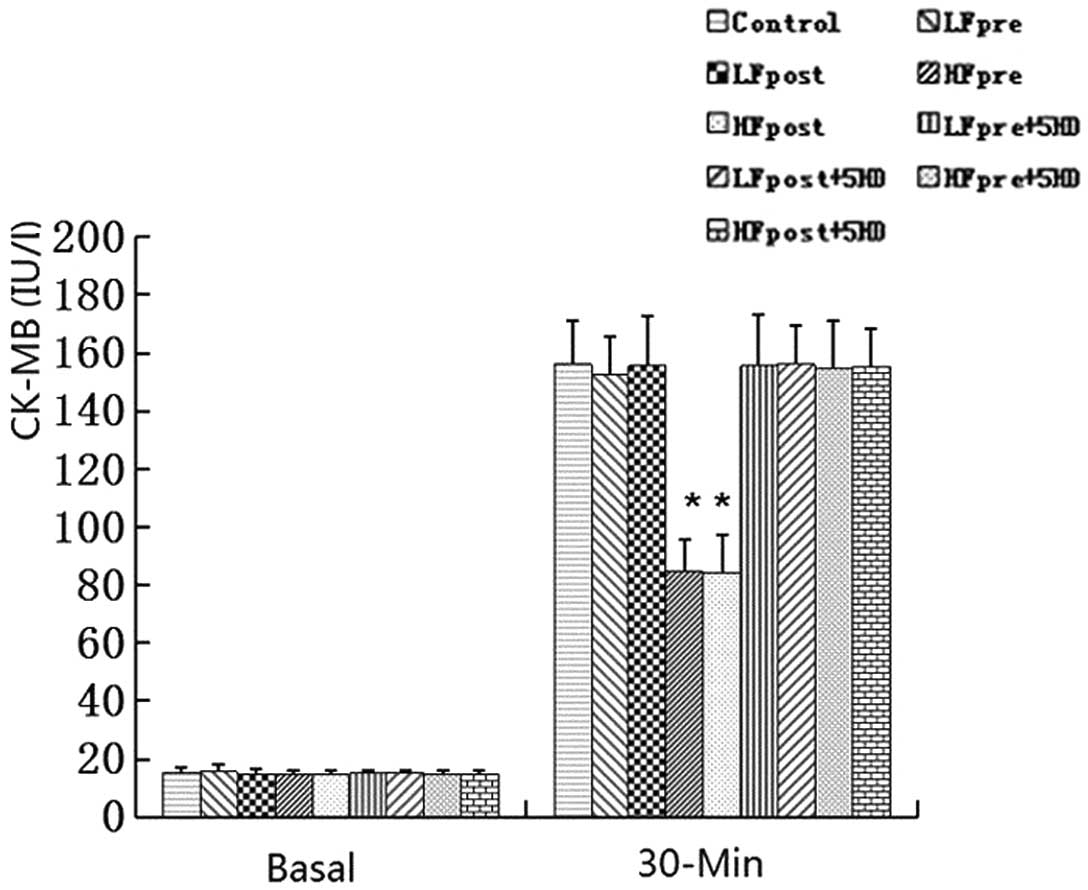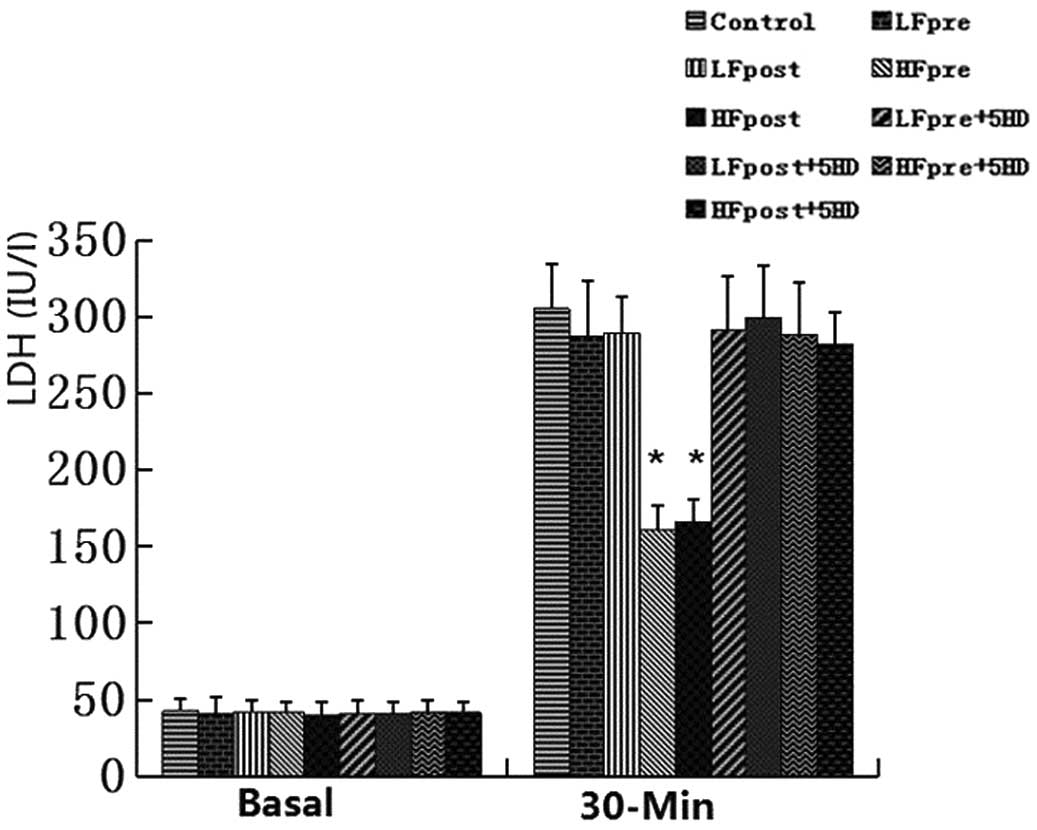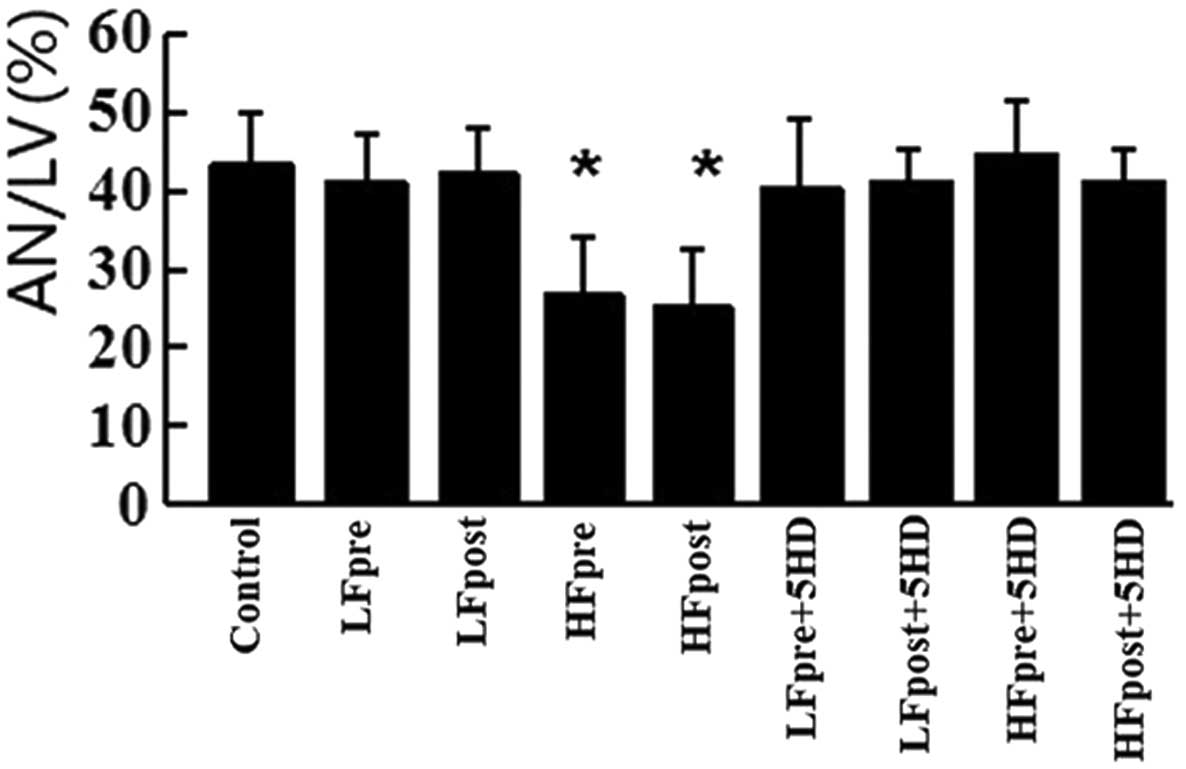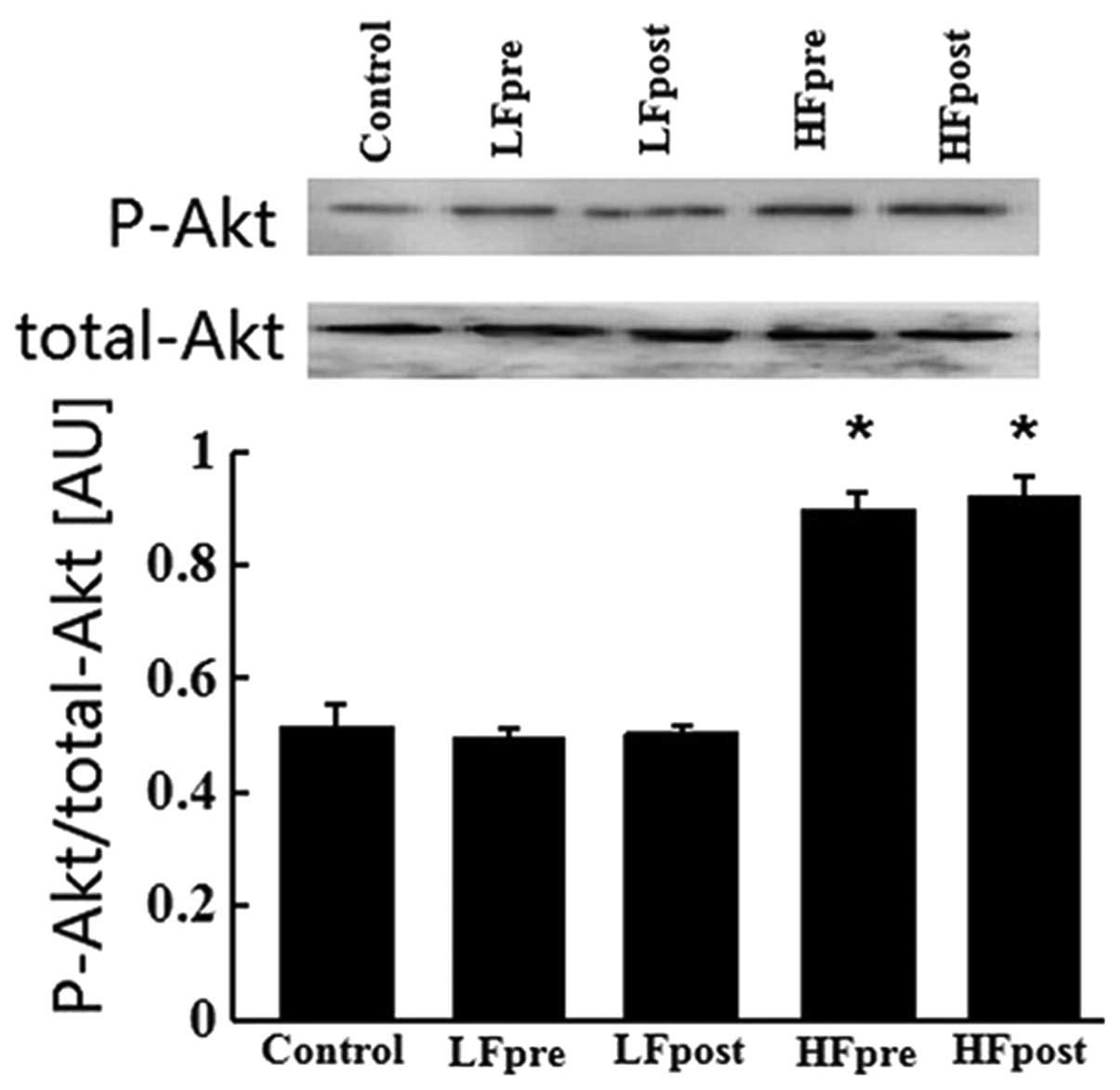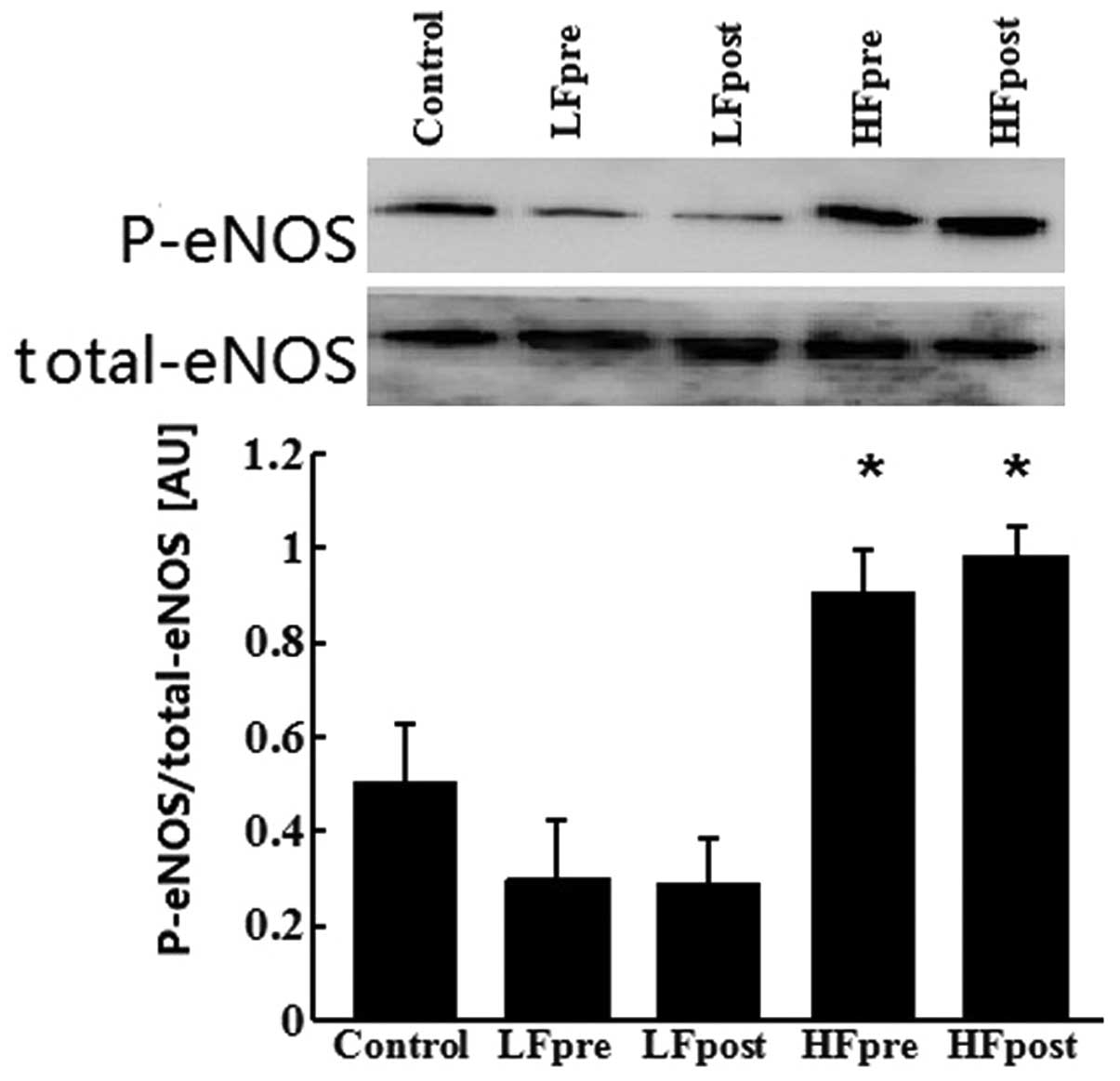|
1
|
Iliodromitis EK, Zoga A, Vrettou A, et al:
The effectiveness of postconditioning and preconditioning on
infarct size in hypercholesterolemic and normal anesthetized
rabbits. Atherosclerosis. 188:356–362. 2006. View Article : Google Scholar : PubMed/NCBI
|
|
2
|
Ferdinandy P, Schulz R and Baxter GF:
Interaction of cardiovascular risk factors with myocardial
ischemia/reperfusion injury, preconditioning, and postconditioning.
Pharmacol Rev. 59:418–458. 2007. View Article : Google Scholar : PubMed/NCBI
|
|
3
|
Balakumar P and Babbar L: Preconditioning
the hyperlipidemic myocardium: fact or fantasy? Cell Signal.
24:589–595. 2012. View Article : Google Scholar : PubMed/NCBI
|
|
4
|
Nunes KP, Rigsby CS and Webb RC:
RhoA/Rho-kinase and vascular diseases: what is the link? Cell Mol
Life Sci. 67:3823–3836. 2010. View Article : Google Scholar : PubMed/NCBI
|
|
5
|
Satoh K, Fukumoto Y and Shimokawa H:
Rho-kinase: important new therapeutic target in cardiovascular
diseases. Am J Physiol Heart Circ Physiol. 301:H287–H296. 2011.
View Article : Google Scholar : PubMed/NCBI
|
|
6
|
Hamid SA, Bower HS and Baxter GF:
Rho-kinase activation plays a major role as a mediator of
irreversible injury in reperfused myocardium. Am J Physiol Heart
Circ Physiol. 292:H2598–H2606. 2007. View Article : Google Scholar : PubMed/NCBI
|
|
7
|
Fukumoto Y, Mohri M, Inokuchi K, et al:
Anti-ischemic effects of fasudil, a specific Rho-kinase inhibitor,
in patients with stable effort angina. J Cardiovasc Pharmacol.
49:117–121. 2007. View Article : Google Scholar : PubMed/NCBI
|
|
8
|
Demiryürek S, Kara AF, Celik A, Babül A,
Tarakçioglu M and Demiryürek AT: Effects of fasudil, a Rho-kinase
inhibitor, on myocardial preconditioning in anesthetized rats. Eur
J Pharmacol. 527:129–140. 2005.PubMed/NCBI
|
|
9
|
Ichinomiya T, Cho S, Higashijima U,
Matsumoto S, Maekawa T and Sumikawa K: High-dose fasudil preserves
postconditioning against myocardial infarction under hyperglycemia
in rats: role of mitochondrial KATP channels. Cardiovasc Diabetol.
11:282012. View Article : Google Scholar : PubMed/NCBI
|
|
10
|
Wolfrum S, Dendorfer A, Rikitake Y, et al:
Inhibition of Rho-kinase leads to rapid activation of
phosphatidylinositol 3-kinase/protein kinase Akt and cardiovascular
protection. Arterioscler Thromb Vasc Biol. 24:1842–1847. 2004.
View Article : Google Scholar : PubMed/NCBI
|
|
11
|
Manintveld OC, Verdouw PD and Duncker DJ:
The RISK of ROCK. Am J Physiol Heart Circ Physiol. 292:H2563–H2565.
2007. View Article : Google Scholar : PubMed/NCBI
|
|
12
|
Zhao JL, Yang YJ, Pei WD, Sun YH, You SJ
and Gao RL: Remote periconditioning reduces myocardial no-reflow by
the activation of K ATP channel via inhibition of Rho-kinase. Int J
Cardiol. 133:179–184. 2009. View Article : Google Scholar : PubMed/NCBI
|
|
13
|
Zhao H, Wang Y, Wu Y, et al:
Hyperlipidemia does not prevent the cardioprotection by
postconditioning against myocardial ischemia/reperfusion injury and
the involvement of hypoxia inducible factor-1alpha upregulation.
Acta Biochim Biophys Sin (Shanghai). 41:745–753. 2009. View Article : Google Scholar
|
|
14
|
Jia D: The protective effect of
mitochondrial ATP-sensitive K+ channel opener,
nicorandil, combined with Na+/Ca2+ exchange
blocker KB-R7943 on myocardial ischemia-reperfusion injury in rat.
Cell Biochem Biophys. 60:219–224. 2011.PubMed/NCBI
|
|
15
|
Nishizawa K, Wolkowicz PE, Yamagishi T,
Guo LL and Pike MM: Fasudil prevents KATP channel-induced
improvement in postischemic functional recovery. Am J Physiol Heart
Circ Physiol. 288:H3011–H3015. 2005. View Article : Google Scholar
|
|
16
|
Ma Z, Zhang J, Du R, Ji E and Chu L: Rho
kinase inhibition by fasudil has anti-inflammatory effects in
hypercholesterolemic rats. Biol Pharm Bull. 34:1684–1689. 2011.
View Article : Google Scholar : PubMed/NCBI
|
|
17
|
Ma Z, Zhang J, Ji E, Cao G, Li G and Chu
L: Rho kinase inhibition by fasudil exerts antioxidant effects in
hypercholesterolemic rats. Clin Exp Pharmacol Physiol. 38:688–694.
2011. View Article : Google Scholar : PubMed/NCBI
|
|
18
|
Hausenloy DJ, Tsang A and Yellon DM: The
reperfusion injury salvage kinase pathway: a common target for both
ischemic preconditioning and postconditioning. Trends Cardiovasc
Med. 15:69–75. 2005. View Article : Google Scholar : PubMed/NCBI
|
|
19
|
Sumi S, Kobayashi H, Yasuda S, Iwasa M,
Yamaki T, Yamada Y, et al: Postconditioning effect of granulocyte
colony-stimulating factor is mediated through activation of risk
pathway and opening of the mitochondrial KATP channels. Am J
Physiol Heart Circ Physiol. 299:H1174–H1182. 2010. View Article : Google Scholar : PubMed/NCBI
|
|
20
|
Hönisch A, Theuring N, Ebner B, Wagner C,
Strasser RH and Weinbrenner C: Postconditioning with levosimendan
reduces the infarct size involving the PI3K pathway and
KATP-channel activation but is independent of PDE-III inhibition.
Basic Res Cardiol. 105:155–167. 2010.PubMed/NCBI
|
|
21
|
Andreadou I, Farmakis D, Prokovas E, et
al: Short-term statin administration in hypercholesterolaemic
rabbits resistant to postconditioning: effects on infarct size,
endothelial nitric oxide synthase, and nitro-oxidative stress.
Cardiovasc Res. 94:501–509. 2012. View Article : Google Scholar
|
|
22
|
Ghosh S, Standen NB and Galiñanes M:
Evidence for mitochondrial K ATP channels as effectors of human
myocardial preconditioning. Cardiovasc Res. 45:934–940. 2000.
View Article : Google Scholar : PubMed/NCBI
|
|
23
|
Mykytenko J, Reeves JG, Kin H, et al:
Persistent beneficial effect of postconditioning against infarct
size: role of mitochondrial K(ATP) channels during reperfusion.
Basic Res Cardiol. 103:472–484. 2008. View Article : Google Scholar : PubMed/NCBI
|















